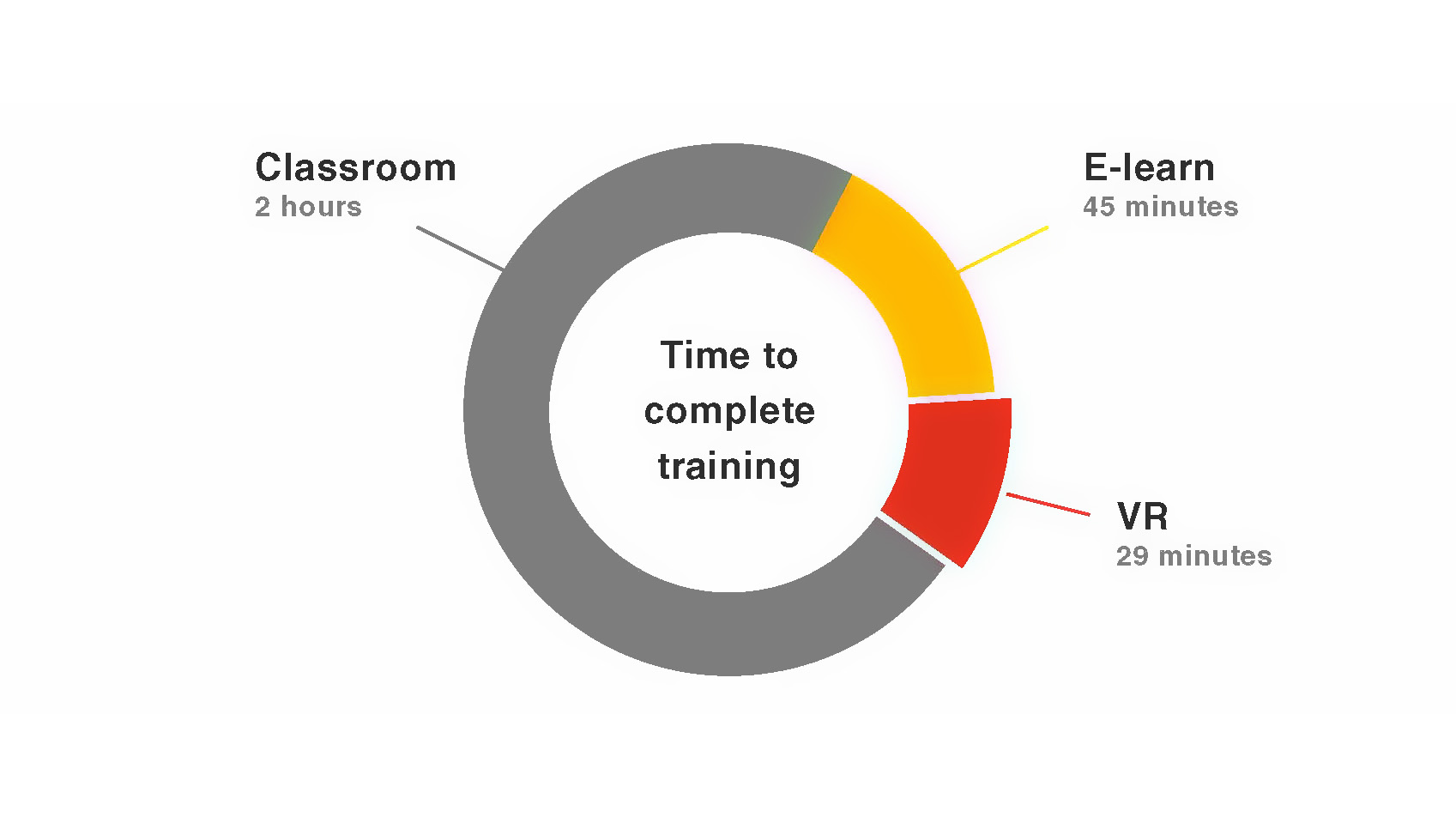

VR training is an immersive learning experience that completely replaces the real world. It recreates real-life settings and simulates work challenges. VR training completely replaces the real world. And such a fully immersive experience enables trainees to improve their professional skills without risks or potential hazard situations.
On top of that, there are many advantages to VR training. But first, let's look into what is it exactly.
There are two types of virtual reality settings:
Well-suited for seated or stationary environments as the position of your user viewpoint is fixed for the whole session. Trainees can interact with the environment with gaze control or a laser pointer controller. 3DoF VR experiences are appropriate for several learning needs, including soft skills, branched learning, and clinical and surgery training.
With a headset, users can move freely in a virtual environment. Trainees can observe and walk around objects placed in the environment just like they would if those objects were real.
In many cases training requires repeated courses and paying qualified trainers for every new employee. This could be quite expensive and time-consuming. With VR solutions a company can avoid much of this and take care of that with a one-time development and on-demand update when it required.

Constantly measuring the performance of a trainee, allows an adaptive learning cycle. The software can decide if the user can access the next phase of the training, or they need more experience in a certain situation that others do not and adjust the training process to that.
In virtual reality, you can easily adjust parts of your training for changing requirements. Modify the environment with new objects, scenarios without the need for the exact physical item or space. Once you have the required software and hardware for the simulation, employees can train anytime at anywhere.
A proper simulation can increase the worker's level of engagement with their daily tasks drastically.

Safety is probably one of the most obvious but the most significant benefit of VR training. In industries like Healthcare, Construction, or Energy safety comes first in many field jobs. Training new workers can be risky and time-consuming because of that. VR training can eliminate these obstacles and speed up the companies onboarding process without any safety issues.
In virtual space, we can easily collect data automatically and accurately compared to traditional learning methods. With these types of trainings, you can easily record how trainees behave during a training session. In addition to video recording, it can create heatmaps where you can check the main focus, when they did something wrong or right. Their natural intuitive reactions to specific situations help you to understand what works and what doesn’t for training sessions.
Practising advanced surgeries and medical training with VR is a great help for surgeons and doctors out there.
In the utility sector workers often have to work with complex systems that run on high voltage. These systems control gas, water, and various energy supplies. Avoiding hazardous situations is always the highest priority and proper virtual training can make all the difference.
They use VR to help onsite stakeholders understand the project’s needs during the planning phase, and they also use it to ensure remote teams can view progress and provide input throughout the construction phase.
Construction workers have a ton of high-risk tasks, applying VR simulations will be a must-have in the future.
Walmart is ahead of most of its competitors, they jump into VR simulations in 2018. As Walmart US Academies' senior director Andy Trainor stated:
"When you watch a module through the headset, your brain feels like you actually experienced a situation."
The US military quickly adopted virtual reality since it is useful for training soldiers for combat situations. It can be flight, vehicle, battlefield simulations, or even medic training.

Broduction
Do you have an exciting VR simulation project in mind? We are transforming ideas into products since 2016 at Broduction. Contact us if you have any questions or want to create a vr training!
Let's talk